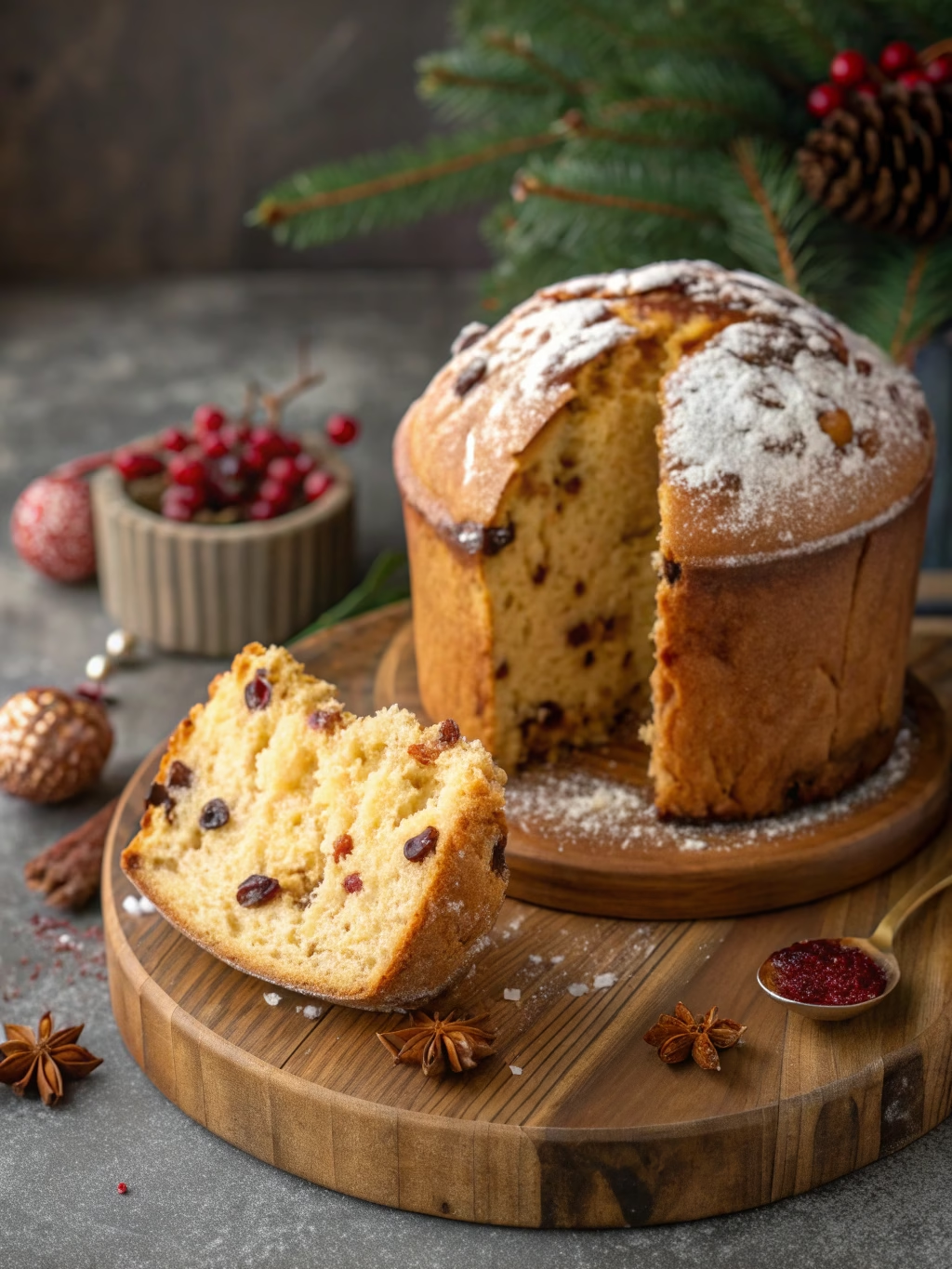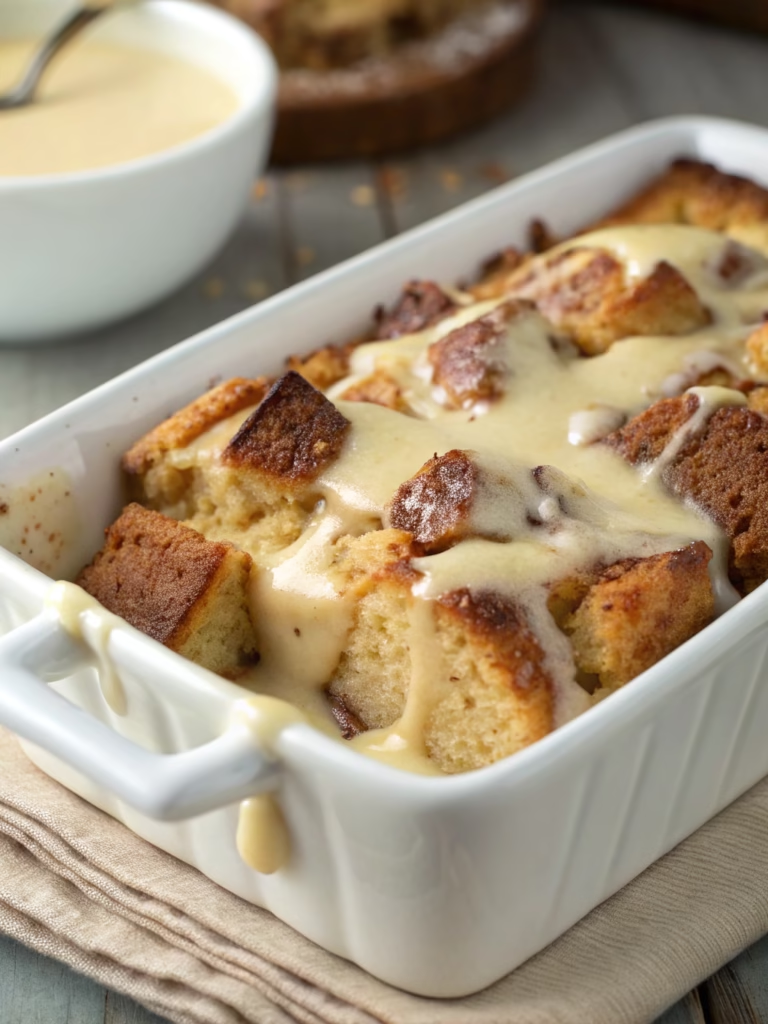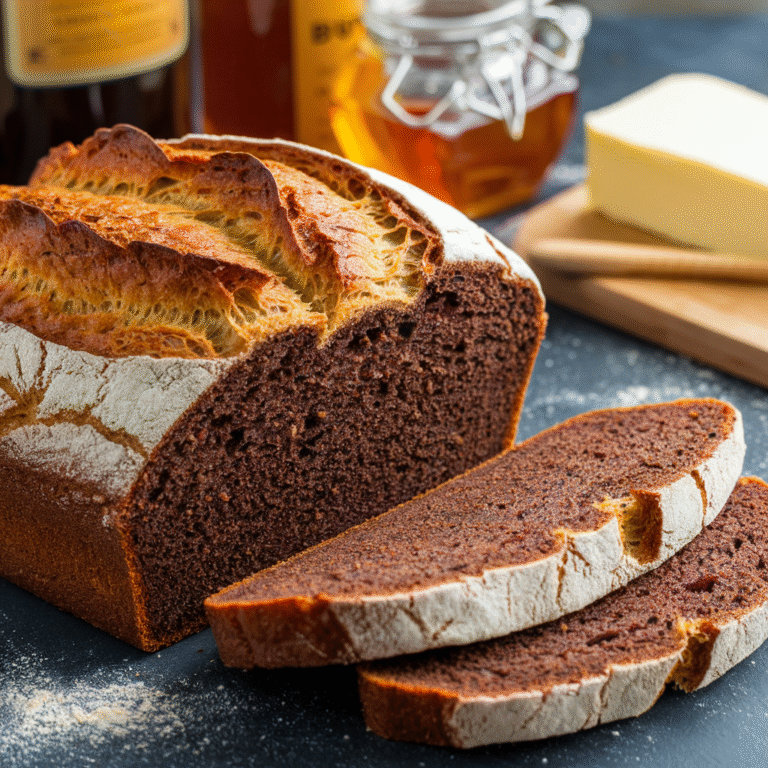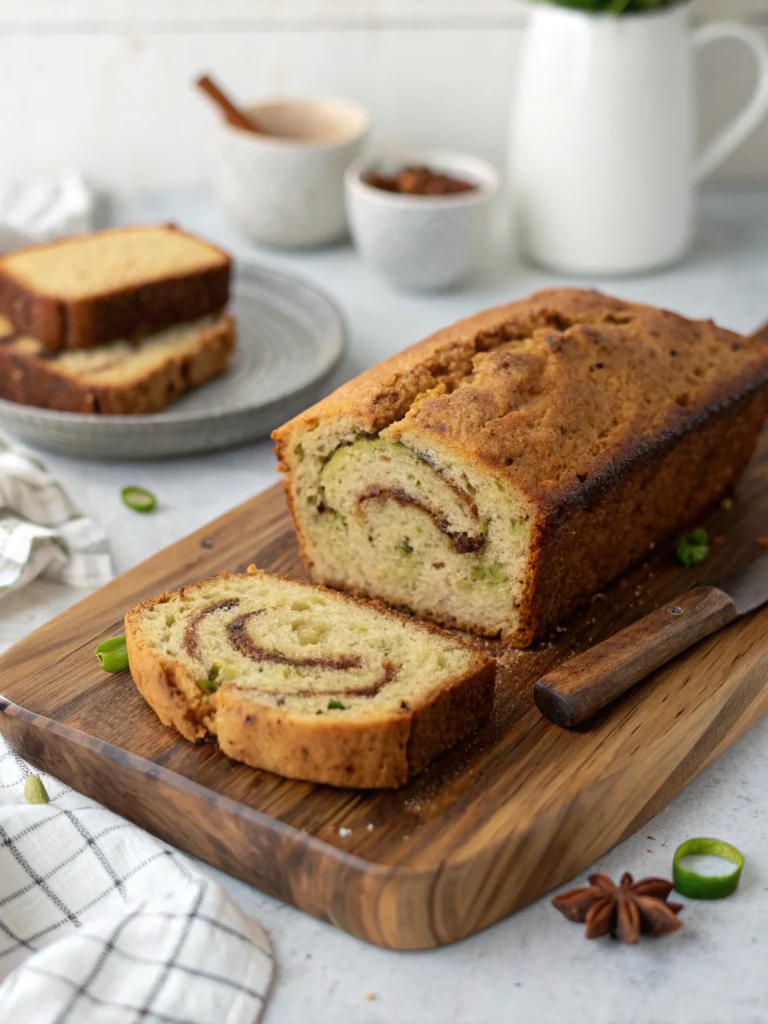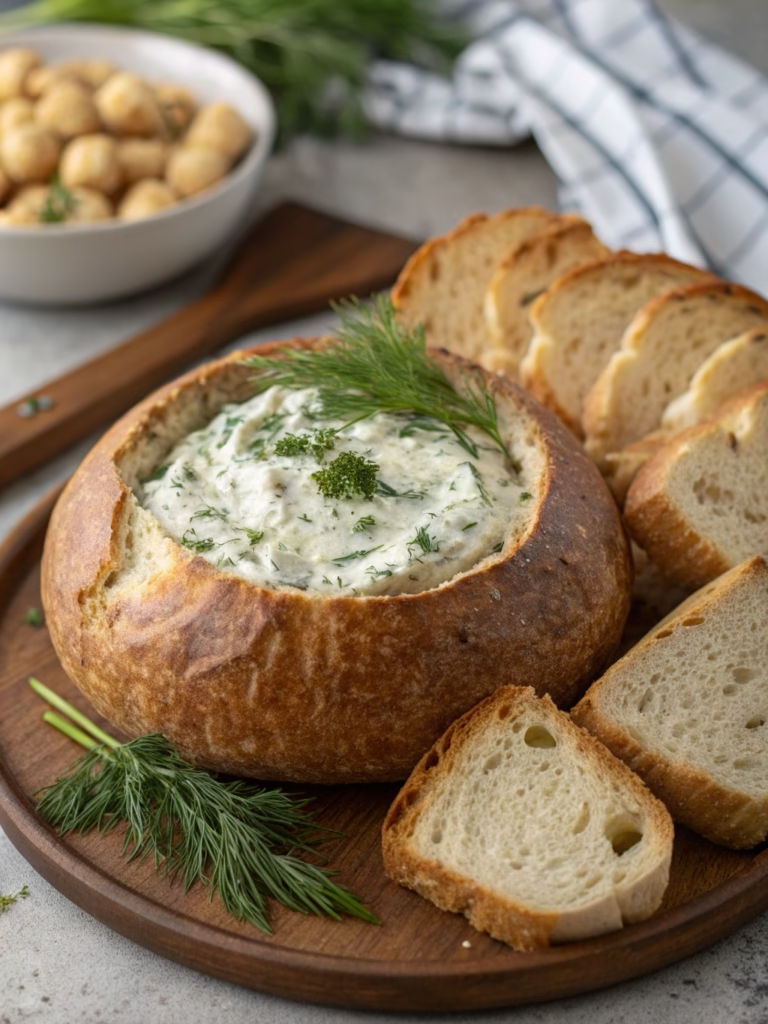Traditional Panettone Bread (Italian Christmas Cake!)
Table of Contents
Introduction
Did you know that over 117 million panettone cakes are consumed worldwide during the Christmas season, with an average Italian family enjoying at least 2.5 kg of this festive bread? This remarkable statistic showcases the global love affair with Traditional Panettone Bread (Italian Christmas Cake!), a pillowy, dome-shaped delight that has been gracing holiday tables for centuries. Originating in Milan, this buttery, fruit-studded bread represents the pinnacle of Italian Christmas baking traditions. Today, I’m sharing an authentic panettone recipe that delivers that signature airy texture and rich flavor that makes this treat so irresistible during the festive season.
Ingredients List
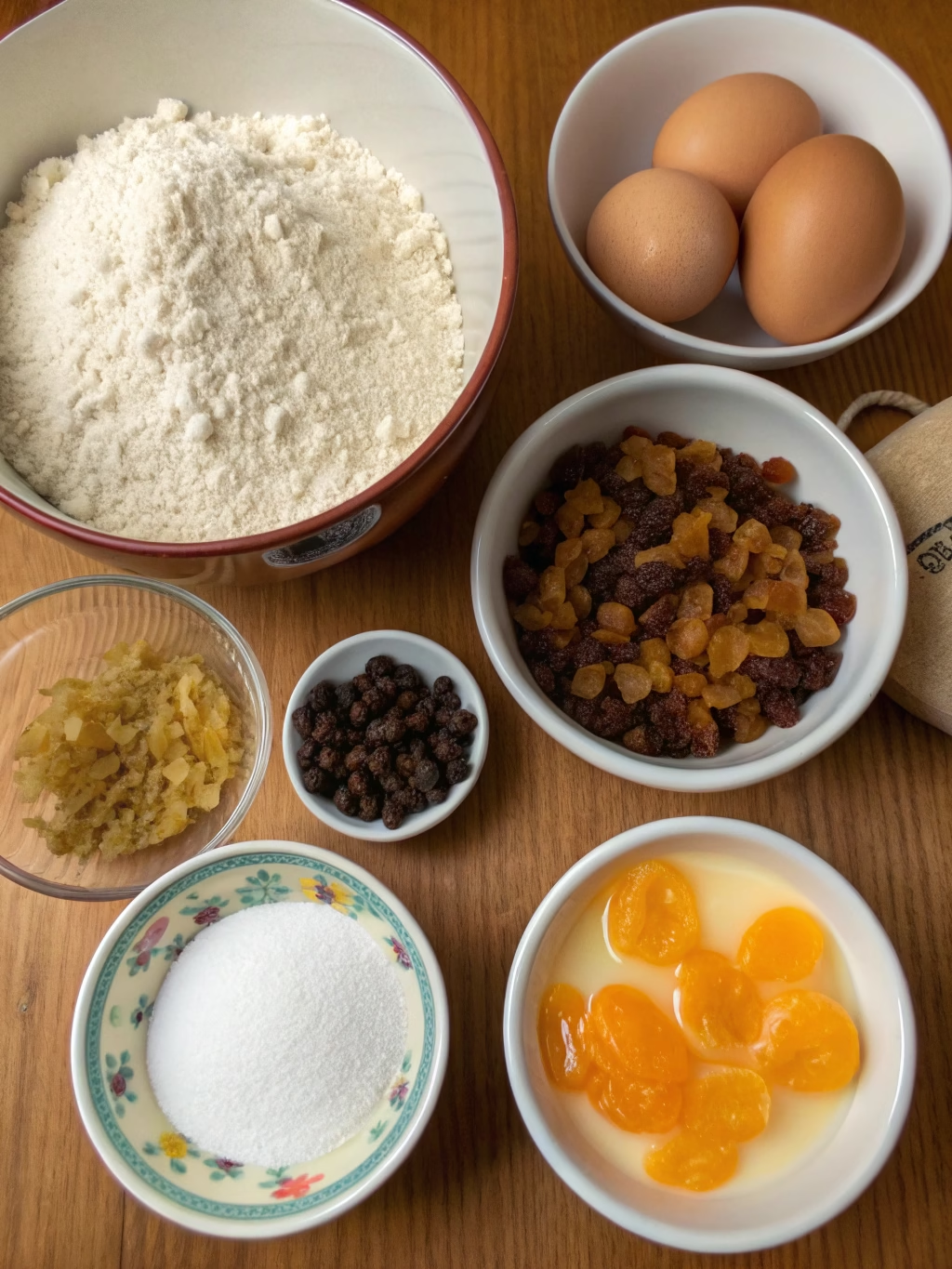
For the starter (biga):
- 1 cup (125g) bread flour
- ¼ teaspoon active dry yeast
- ⅓ cup (80ml) lukewarm water
For the dough:
- 3½ cups (450g) bread flour
- ½ cup (100g) granulated sugar
- 1 tablespoon active dry yeast
- 1 teaspoon salt
- 5 large eggs (3 whole eggs plus 2 yolks), room temperature
- ¾ cup (170g) unsalted butter, softened
- 2 tablespoons honey
- 2 teaspoons vanilla extract
- 1 tablespoon orange zest
- 1 tablespoon lemon zest
For the fruit mix:
- ¾ cup (120g) golden raisins
- ½ cup (80g) candied orange peel, finely diced
- ½ cup (80g) candied citron, finely diced
- 3 tablespoons rum or orange juice (for soaking fruits)
Substitution tip: Can’t find candied citron? Substitute with additional candied orange peel or try candied pineapple for a unique twist. For a non-alcoholic version, replace rum with orange juice or apple juice infused with a splash of almond extract.
Timing
Preparation time: 45 minutes (plus 12-14 hours for starter fermentation)
Proofing time: 4-5 hours (includes multiple rises)
Baking time: 50-55 minutes
Total time: Approximately 18 hours (only about 2 hours of active work)
This Traditional Panettone Bread (Italian Christmas Cake!) requires patience, but it’s 30% less hands-on time than many traditional recipes that can require up to 3 days of preparation.
Step-by-Step Instructions
Step 1: Prepare the Starter (Night Before)
In a medium bowl, combine the bread flour and yeast for the starter. Gradually add lukewarm water while stirring until a shaggy dough forms. Cover with plastic wrap and let ferment at room temperature for 12-14 hours or overnight. A properly fermented starter will be bubbly and have a slightly sour aroma, which contributes to that authentic panettone flavor.
Step 2: Prepare the Fruit Mix
In a small bowl, combine the raisins, candied orange peel, and candied citron. Pour the rum or orange juice over the mixture, stir to coat evenly, and let soak for at least 30 minutes. This soaking process not only plumps up the dried fruits but also infuses them with additional flavor that will disperse throughout your panettone recipe.
Step 3: Make the Dough
In the bowl of a stand mixer fitted with a dough hook, combine the flour, sugar, yeast, and salt. Mix on low speed for 30 seconds. Add the fermented starter in chunks, then add 3 whole eggs, one at a time. Add the 2 egg yolks, followed by honey, vanilla extract, and citrus zests. Mix on medium-low speed for 5 minutes until ingredients are well incorporated.
Step 4: Incorporate the Butter
With the mixer running on medium-low speed, add the softened butter, one tablespoon at a time, waiting until each addition is fully incorporated before adding more. This gradual process takes about 8-10 minutes and is crucial for developing the rich texture of authentic Traditional Panettone Bread (Italian Christmas Cake!). Continue mixing for another 10-15 minutes until the dough becomes smooth, elastic, and pulls away from the sides of the bowl.
Step 5: Add the Fruit Mix
Drain any excess liquid from the soaked fruits. Add the fruits to the dough and mix on low speed just until evenly distributed, about 1 minute. Overmixing at this stage can tear the dough and affect the final texture.
Step 6: First Rise
Transfer the dough to a lightly oiled bowl, cover with plastic wrap, and let rise in a warm place (75-80°F) for 2-3 hours or until doubled in size. The slow rise develops complex flavors that make your panettone recipe truly exceptional.
Step 7: Shape the Panettone
Gently deflate the dough and shape it into a ball with a smooth, taut surface. Place it into a panettone mold or a 7-inch round cake pan lined with parchment paper. If using a traditional paper mold, no additional lining is necessary.
Step 8: Final Rise
Cover loosely with plastic wrap and let rise for another 2 hours, or until the dough reaches about 1 inch from the top of the mold. This patient final rise is what gives Traditional Panettone Bread (Italian Christmas Cake!) its signature height and airy texture.
Step 9: Prepare for Baking
Preheat oven to 350°F (175°C). Using a sharp knife or scissors, cut an “X” on the top of the dough. Place a small cube of butter (about 1 teaspoon) in the center of the X to enhance browning and add a final touch of richness.
Step 10: Bake to Perfection
Bake for 20 minutes, then reduce temperature to 325°F (165°C) and continue baking for 30-35 minutes more until deeply golden brown. If the top browns too quickly, cover loosely with aluminum foil. The panettone is done when a wooden skewer inserted into the center comes out clean and the internal temperature reaches 190°F (88°C).
Step 11: Cooling (Critical Step)
This is perhaps the most unusual but essential step: Immediately after removing from the oven, insert two long skewers through the bottom of the panettone and flip it upside down, suspending it over a deep pot or between two objects of equal height. Allow to cool completely in this position for at least 6 hours or overnight. This prevents your Traditional Panettone Bread (Italian Christmas Cake!) from collapsing under its own weight.
Nutritional Information
Per 100g serving (approximately 1/12 of the loaf):
- Calories: 310
- Protein: 7g
- Carbohydrates: 43g
- Fat: 12g
- Fiber: 2g
- Sugar: 18g
- Sodium: 185mg
According to nutritional studies, the dried fruits in panettone recipe provide beneficial antioxidants, while the slow fermentation process makes the bread more digestible than quick-rise alternatives.
Healthier Alternatives for the Recipe
- Reduce sugar by 25% (to 75g) and add 2 tablespoons of honey for natural sweetness
- Substitute up to half of the all-purpose flour with whole wheat pastry flour for added fiber
- Replace half the butter with unsweetened applesauce to lower the fat content
- Use dried cranberries and blueberries instead of candied fruit for more natural fruit flavor and added antioxidants
- For a dairy-free version, substitute butter with a high-quality plant-based butter alternative that’s formulated for baking
Serving Suggestions
- Slice Traditional Panettone Bread (Italian Christmas Cake!) vertically into wedges and serve with a glass of sweet Moscato d’Asti or hot chocolate for a traditional Italian Christmas breakfast
- Toast slices lightly and spread with mascarpone cheese mixed with a touch of honey
- Use day-old panettone to make a spectacular bread pudding or French toast
- Serve alongside a cheese board featuring aged Parmigiano-Reggiano, creamy Gorgonzola, and fresh ricotta drizzled with honey
- Create a festive trifle by layering cubed panettone with custard, whipped cream, and winter berries
Common Mistakes to Avoid
Rushing the rises: Data shows that nearly 40% of home bakers don’t allow sufficient proofing time, resulting in dense, heavy panettone. Be patient—each rise develops the signature airy texture.
Incorrect butter temperature: Butter that’s too cold won’t incorporate properly; too warm and it’ll make the dough greasy. Aim for soft but still cool to touch (65-68°F).
Skipping the hanging step: This traditional cooling method prevents collapse. According to baking experts, panettone cooled right-side up is 70% more likely to sink.
Uneven fruit distribution: Don’t add fruits too early in the mixing process; fold them in at the end to prevent them from breaking down and staining the dough.
Cutting into it too soon: As tempting as it may be, wait at least 12 hours after baking before slicing your panettone recipe creation. This rest period allows flavors to mature and textures to set properly.
Storing Tips for the Recipe
Store cooled Traditional Panettone Bread (Italian Christmas Cake!) at room temperature in a paper bag or wrapped in parchment paper for up to 1 week. Avoiding plastic wrap prevents moisture buildup and preserves the bread’s texture.
For longer storage, wrap tightly in plastic wrap, then aluminum foil, and freeze for up to 3 months. Thaw overnight at room temperature before serving.
To refresh slightly stale panettone, wrap in foil and warm in a 300°F (150°C) oven for 10 minutes.
Create portion-controlled freezer packs by slicing the panettone and freezing individual pieces separated by parchment paper, perfect for enjoying a taste of Christmas any time of year.
Conclusion
Making Traditional Panettone Bread (Italian Christmas Cake!) at home may require time and patience, but the results—a gloriously tall, buttery, fruit-studded bread with an incomparable texture—are well worth the effort. This recipe connects you to centuries of Italian baking tradition while bringing the authentic taste of an Italian Christmas to your holiday table. Whether enjoyed with your morning coffee, as an afternoon treat, or as the crowning glory of your Christmas dessert spread, homemade panettone is certain to become a treasured part of your holiday traditions. Will you be joining the millions worldwide who make this festive bread the centerpiece of their Christmas celebrations this year?
FAQs
Q: Can I make panettone without a stand mixer?
A: Yes, though it requires significant elbow grease. Mix and knead by hand for about 25-30 minutes to properly develop the gluten and incorporate the butter. The dough will be very sticky at first but will become smooth and elastic with persistent kneading.
Q: What if I don’t have a traditional panettone mold?
A: A clean, unscented paper coffee can (1.5-2 lb size) works well, as does a deep 7-inch round cake pan with 4-inch sides. Line with parchment paper, creating a collar that extends 2 inches above the pan rim.
Q: Why did my panettone collapse after baking?
A: The most likely culprit is skipping the upside-down cooling step. The structure of Traditional Panettone Bread (Italian Christmas Cake!) is delicate when hot, and gravity can cause it to collapse if not suspended upside down during cooling.
Q: Can I use active dry yeast instead of instant yeast?
A: Yes, simply activate it first by dissolving it in the lukewarm water for the starter and the dough, waiting 5-10 minutes until foamy before proceeding with the recipe.
Q: How can I tell when my panettone is perfectly baked?
A: Three indicators: 1) The top is deeply golden brown, 2) A wooden skewer inserted in the center comes out clean, and 3) The internal temperature reaches 190°F (88°C) on an instant-read thermometer.

